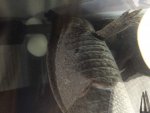Re: Black spots on my albino axolotl, please help
EM erythromycin has saved my Axies several times so it is my go to medicine ?. I wasn't sure if you tried salt bathing but usually that is for external fungal infections. If you have already done it and didn't see a difference then salt bathing is not going to help.
What you are showing is a little new and different. It is hard to pinpoint what it is. Basically if your axie eats healthy and behaves normally you can assume the axolotl is spotty and may have been a mixed breed. If your axie is sick, it will behave sick, ie not eat, be lethargic, float and look miserable, tries to scratch itself, etc. When they are very young, you can't see their skin discolourations.
Again definitely do share / confirm your water parameters. If your parameters are poor, no medicine is going to help.

